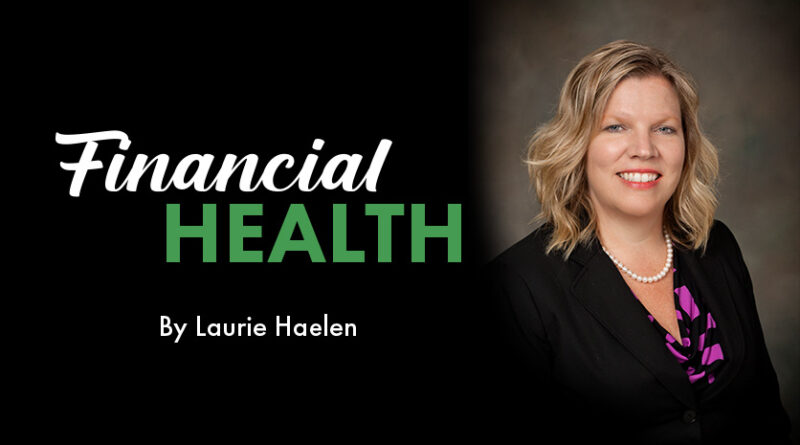Income Opportunities in Today’s Environment
Investors were disappointed in 2022 with both stocks and fixed income finishing the year with negative returns.
Year to date, the market has improved a bit, but uncertainty abounds as the Fed tries to tackle inflationary concerns without pushing the U.S. into a recession, a task that seems more and more challenging as the months progress.
As I am fond of telling clients, every market scenario — both good and bad — generates opportunities. You just need to be patient and always on the lookout for the chance to benefit from the inevitable changes in the market.
So, why should investors be happy about rising interest rates? The short answer is, many people are getting a pay raise that we have not seen in a long time. When interest rates rise, the market value of most assets tends to decline. But the actual income on many assets rises, providing a greater cash flow stream for investors. And, to receive that income, the amount of risk one has to take is often significantly less. If this sounds too good to be true, understand that it does not happen very often and can be beneficial for investors in various ways.
For savers who rarely like to take risks, this is the moment you have been waiting for. Most banks are offering CD rates that for the first time in many years are topping 4%, while money market rates for investment accounts are also more than 4%. This means that if you have $100,000 to invest, you could earn $4,000 a year on those funds with very limited risk. Be sure to be aware of the FDIC limits, the importance of which was highlighted this year with the recent bank failures. Deposits are insured up to at least $250,000 per depositor, per FDIC insured bank, per ownership category.
Another option that has surged in popularity for savers is investing in treasuries, primarily short-term (treasury bills), as the yield curve remains inverted (long-term rates are lower than short-term rates) as of this writing. Short-term treasuries are paying well over 4% and are backed by the full faith and credit of the U.S. government. These can be purchased through a brokerage or managed investment account, or through the auction (TreasuryDirect.gov).
For those willing to tie up their money a bit longer, fixed annuities are also an option. Fixed annuities are contracts between an investor and an insurance company. They pay a fixed rate for the term of the contract (usually anywhere from 3-7 years).
An additional benefit (if you are not drawing the income for living expenses) is that the investment grows tax deferred. It is very important to be aware of the quality of the insurance company where the funds are invested, the total fees paid and to avoid the surrender charges (which can be as high as 7%) for early withdrawals. Many contracts allow penalty free withdrawals — as much as 10% of the value — in the first few years.
If you are fully invested in a specific allocation (i.e. 60% stock, 40% bond portfolio) and have wisely stayed the course in the midst of market turmoil, you will also benefit from the current rate environment. Bond yields for the past several years have been in the mediocre 2% range and have increased to over 4% or more. Tax-free municipal bond yields have increased as well, a boon to an investor in a high tax bracket. The implications for a 60-40 portfolio are that the 40% invested in bonds — diversified or not— will now provide an investor with as much as twice the income as before. The increased income can help retired investors by allowing them to continue to receive the cash flow they need—without taking so much from principal when the equity markets are still well off their highs.
There are yield opportunities in the stock market as well for those who are willing to take the risk. Certain sectors historically have provided the most dividend yield, well above the current S&P 500 yield of under 2%. Those sectors include: financials, utilities, real estate and energy are some of the sectors boasting a higher yield than the S&P 500. Most 60-40 portfolios own these sectors (whether in mutual funds or individual stocks) and staying well diversified by not owning too much in any one sector still beats the benefit of concentrating one’s holdings just to obtain yield. A better strategy for income-oriented investors is to consider the dividend growth of a company as well as the current yield to take advantage of both current yield and future growth.
If you are fully invested and keep little cash on hand, you may not need to do a thing to benefit from the current rate environment — just collect the higher income from bonds and wait for stocks to recover, as history tells us they will. But, if you keep cash on hand, now is the time to maximize returns with lower risk vehicles. With inflation still taking a big bite out of our purchasing power, every little bit helps.
 Laurie Haelen, AIF (accredited investment fiduciary), is senior vice president, manager of investment and financial planning solutions, CNB Wealth Management, Canandaigua National Bank & Trust Company. She can be reached at 585-419-0670, ext. 41970 or by email at lhaelen@cnbank.com.
Laurie Haelen, AIF (accredited investment fiduciary), is senior vice president, manager of investment and financial planning solutions, CNB Wealth Management, Canandaigua National Bank & Trust Company. She can be reached at 585-419-0670, ext. 41970 or by email at lhaelen@cnbank.com.

